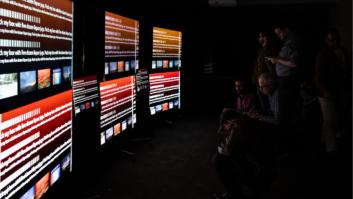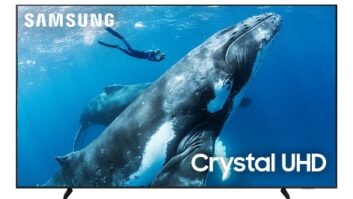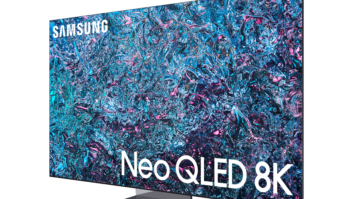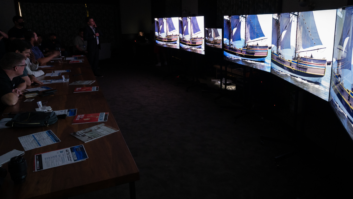Vizio ceased production of 3D TVs several years ago, and Samsung ditched the feature in 2016, but with the arrival of the 2017 lineup from Sony and LG, mainstream TV manufacturer support for 3D in the flat panel market has officially disappeared.
It seems like only yesterday that every video manufacturer was falling all over themselves to tell us how 3D was going to be the next big thing. Upon introduction, 3D was hailed as the big step-up feature that people would demand, and was going to be the technology chosen to drive purchases to those step-up sets. People would queue up at tradeshows waiting for their turn to don a pair of 3D glasses to see if a particular company’s implementation was the magic bullet to deliver a truly immersive 3D experience.
But, alas, it was not to be.

Image: Thinkstock
Granted, I had my share of less-than-loving things to say about 3D. With posts like “3D hates babies, old people, and drunks,” “3D loves your children blind,” and “3D, I still pretty much hate you,” I was clearly not an early adopter cheerleader of this new technology/feature. This, however, turned out to be a polarizing love it/hate it issue, and those that loved it are likely going to mourn its passing, especially when it comes time for them to purchase their next TV.
If we were to perform an autopsy on the corpse and summarize the nails in 3D’s coffin, it could probably be narrowed down to four simple things: glasses, timing, content, and non-4K support.
Glasses:
By far the biggest hurdle to 3D’s home acceptance was the need to wear glasses. First was the added cost, with active glasses often costing nearly $100 per pair. Further, most active glasses were not interchangeable, meaning that “Brand S” glasses probably wouldn’t work with Brand V TVs. Second was the fact that most people multi-task while watching, and 3D glasses posed a major hindrance to this activity. Third, some people either couldn’t see the 3D effect or were made dizzy/nauseous by it—kind of a major buzzkill when having a movie night. And, try as companies might, every glasses-free 3D demo that I have witnessed still falls miserably short of being acceptable for full-time viewing.
Timing:
3D started coming on big and strong in 2010, but by then most people had already upgraded aging, non-1080p TVs, and purchased sets with greatly improved contrast, resolution, processing, and flatness. The great flat-panel boom started back in 2007-2009, and millions of sets flooded into the market then, and people needed something more convincing than 3D to ditch the TV they had just dropped several thousand dollars on. Further, since 3D support required implementation of HDMI 1.4 and a new Blu-ray player, upgrading to 3D often meant a replacement of the entire signal chain in a customer’s system, further raising the cost of entry.
Content:
It took a looooong time for decent 3D content to make its way to the home market. The initial slate of non-animated titles—Saw: The Final Chapter 3D, Piranha 3D, Resident Evil: Afterlife 3D, Step Up 3D: Make your Move, Clash of the Titans 3D, My Bloody Valentine 3D—was questionable at best, and definitely not movies designed to inspire people to run out and buy into the new technology. Manufacturers didn’t help, either, when they failed to lock down exclusive content deals with studios. For example, the only way that you could own Avatar—the highest grossing film of all time and the 3D experience to which all others are compared—for the first couple of years was to purchase a Panasonic TV.
Then, when decent movies finally became available, there was often a massive upcharge to purchase the 3D bundle, with many 3D combo packs costing upwards of $39, or frequently twice as much as the non-3D version. Finally streaming and cable/satellite 3D distribution never really took off. One of the best uses of 3D that I ever saw was The Masters golf tournament which let you really appreciate the undulations and breaks in the greens, but the tournament was only in 3D once and not broadcast live.
Non-4K:
The final hole in the leaking hull of the good ship 3D was also the thing that could have been its technological triumph: 4K. When 3D was not made part of the 4K Ultra HD Blu-ray spec, the future of this technology was written on the wall. Sadly, with a 4K 3D disc we could have finally enjoyed true 1080p left eye/right eye content with no loss of resolution. With the greater brightness of HDR, we could have also overcome the inherent dimness the glasses caused.
The real irony is that with 3D truly on its way out, I have actually just started to get to where I am embracing it. No joke, just last week I purchased three pairs of active 3D glasses to go with our Sony 4K TV. Why? Turns out that I have slowly accumulated a collection of about 15 3D Blu-ray titles that I thought it might be fun to watch. Between Cars 2, Minions, Rogue One, The Walk, Passengers, and Terminator Genisys, I finally had enough Blu-ray combo packs to justify the purchase.
For customers still jonesing to get their 3D on, they have a couple of options. They can purchase a 2016 set from LG or a Z-series model from Sony, carried over from 2016. Or they can step up to front projection, where 3D is still widely supported from manufacturers like JVC, Sony, Epson, Ben Q, and Optoma.
With its larger screen and dedicated viewing environment (with fewer distractions) front projection typically makes the best presentation for 3D and might be where 3D lives on at home…for a few more years at least.







